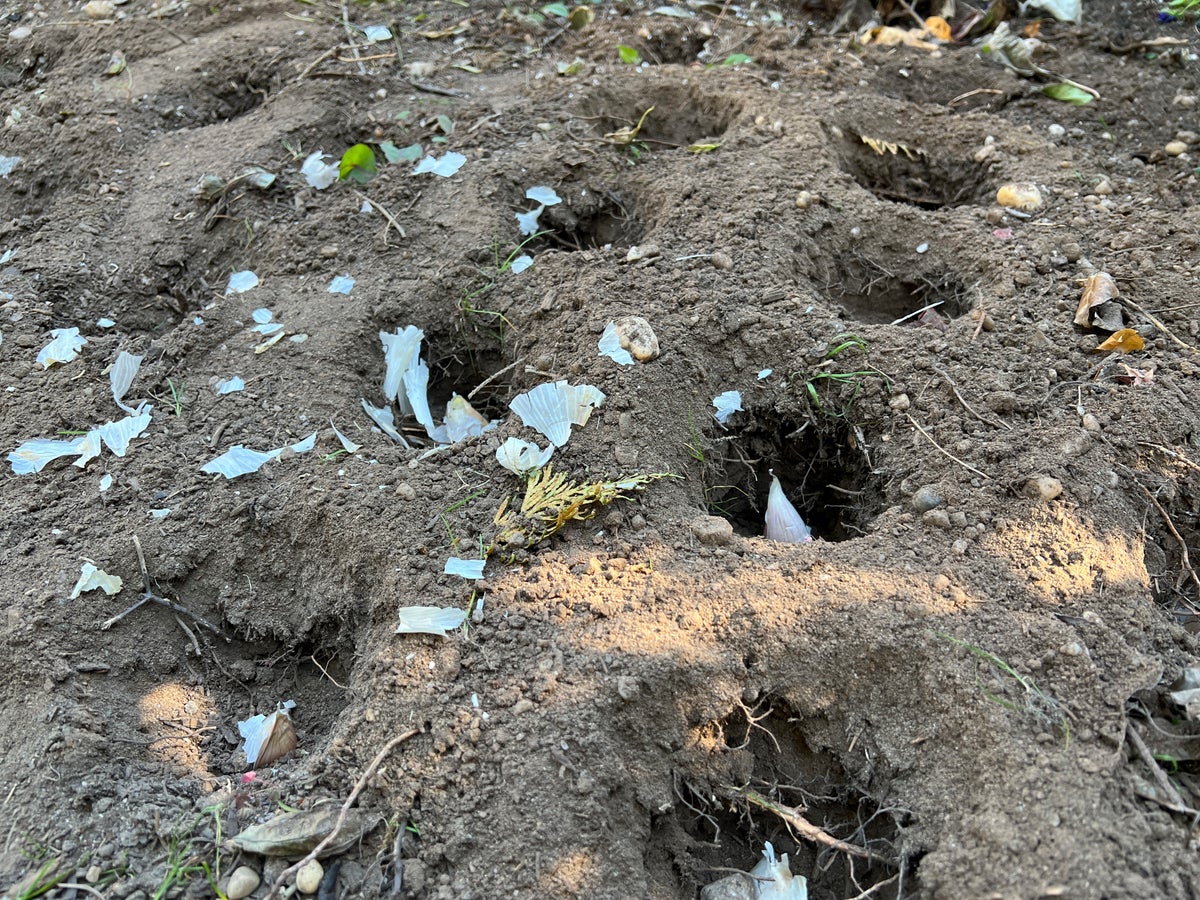
I planted my garlic last week, and after tucking the 30 plump cloves into their bed, my thoughts turned to protecting them from freezing temperatures and stealth animals that dig them up every year and leave them on the soil surface to mock me.
So, this year, I laid bird netting over the soil (chicken wire would work, too, perhaps better, but I used what I had). Then, I covered the whole thing with about 4 inches of straw.
This is good practice for protecting any bulbs you plant, especially those deemed more gastronomically enticing to wildlife than garlic, like tulips and crocuses.
Protect those bulbs
Chicken wire and netting serve as physical barriers that deter digging while allowing sunlight and water to reach the soil. Use landscape pins, stakes or stones to hold it in place or attach its outer edges to the wood frame of a raised bed with nails or a staple gun. You can remove it in spring, but this isn’t necessary; shoots and stems will find their way through the openings as they grow.
Straw is a beneficial mulch material that helps regulate soil temperatures, prevents bulbs and plant crowns from lifting out of the ground during the freeze-thaw cycles of winter, adds nutrients to the soil as it decomposes and helps to retain moisture. It also cuts down on premature sprouting during winter warm spells.
Straw, not hay
Do not use hay, which is grown as animal feed and, as you know, is for horses. It also contains tall grass, alfalfa, clover or other seed heads that would sprout along with your bulb plants and make a mess of your garden come spring.
Straw, the stalk of a grain crop that remains after the seeds have been harvested, is supposed to be free of seeds. Still, you might find yourself pulling up a few wheat seedlings, but that would be more manageable than a hay-induced fever dream.
Straw is also less likely to contain pesticides and herbicides, which could harm your plants. Seek out products that are labeled as organic or at least free of pesticides.
Bales sold as Halloween decorations can be made of either hay or straw. You may be able to determine the difference on sight (hay is greenish; straw is yellowish-beige), but it’s unlikely you’ll be able to confirm whether they are organic, free of pesticides or even where they came from. In addition, they might harbor mold or fungal diseases.
I wouldn’t recommend using decorative bales made of either material in the garden, especially around edible plants, but they certainly can be repurposed in chicken coops or to cover dirt walkways, which can get muddy if left bare.
Best fertilizers
Avoid fertilizing bulbs with bone meal, blood meal, fish emulsion or other smelly amendments that could attract hungry critters. And clean up any papery bulb skins from the soil surface that would otherwise serve as a GPS to the buffet line.
Many wildlife repellents deter squirrels, rabbits, chipmunks and other critters from digging up bulbs, but they must be applied repeatedly and I, for one, will not be found spraying my soil in the dead of winter.
Some repellents can be used to treat bulbs before planting, but they, too, eventually wear off. However, in the absence of a physical barrier, which is my gold standard, repellents can be effective if you are diligent.
___
Jessica Damiano writes weekly gardening columns for the AP and publishes the award-winning Weekly Dirt Newsletter. You can sign up here for weekly gardening tips and advice.
___
For more AP gardening stories, go to https://apnews.com/hub/gardening.







